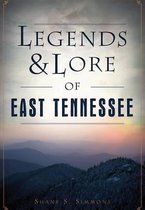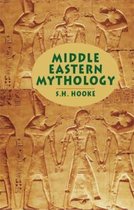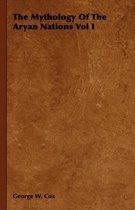Mythlogical Bonds Between East And West
Afbeeldingen
Sla de afbeeldingen overArtikel vergelijken
Auteur:
Dorothea Chaplin
- Engels
- Paperback
- 9781406739862
- 15 maart 2007
- 160 pagina's
Samenvatting
MYTHOLOGICAL BONDS BETWEEN EAST AND WEST WITH ILLUSTRATIONS BY DOROTHEA CHAPLIN, F. s. A., SCOT. EINAR MUNKSGAARD COPENHAGEN 1938 Copyright 1938 by Mrs. Dorothea Chaplin, London All rights reserved. Printed in Denmark, H. P. Hansens Bogtr., Kbhvn. CONTENTS. Page The Boar in Britain 9 The Serpent and other Tribes 24 The Symbol of the Deer ... 45 Indivisibility and Relativity 56 Symbols and Customs 68 Nomenclature 85 Glimpses of Prehistoric Times 101 Connecting Links 112 Picts and their Antecedents 128 ILLUSTRATIONS. Page Serpents in Margate Grotto 31,32 Serpent design at Nigg 33 Serpent Viking Ship 38 Plaque 40 Chakra 41 Stave church at Borgund 42 Rock Drawing on Traprain Law 46 St. George, Rothenburg 64 Gundestrup Bowl 82 Rock Drawing on Traprain Law 131 The Tomachar Stone 137 Chart 144 Chapter I. THE BOAR IN BRITAIN. The Boar symbol, which appears in various places in the British Isles, seems to be closely related to St. Andrew, as a pre-Christian figure. In the coat-of-arms of St. Andrews, Fife, the Patron Saint of Scotland appears with a Saltire, or Cross of St. Andrew in the background, but there is no sign of crucifixion. Below the Cross are a Tree and a Boar, neither of them Christian emblems, but both of them Aryan symbols. The Saltire of the Picts was in existence long before the days of Christianity, as were all forms of the Cross and many ancient symbols found their way into crests and coats-of-arms at a very much later period. Boars make their appearance carved upon rock and stone, and as hog-backed tombstones, in different parts of Britain, although they are not very numerous. Examples are the pillar stone, near Inverness, called the Knock-na-Gael Stone, on which there is aBoar, the carving on the rock-fortress at Dunadd, in Argyll, where the first Scottish king was crowned, and a Boar in Haddington hog-backed tombstones on the Abercorn estate, near Edinburgh on the Isle of Inchcolm in the Firth of Forth, and in the churchyard of St. Andrews, Penrith, Cumberland. On the oldest inner wall of St. Davids Cathedral, in South Wales, near the Shrine of St. Andrew, the first Patron Saint of St. Davids, there is a carving of a Boar, and it is probably connected, mythologically, with this saint. 10 Tracing the whereabouts of the symbolic Boar in Britain, we find the Croft of Muickan, or Pigs Place, near Glengairn, in the Braes o Mar, Aberdeenshire. This Pig, or Boar must have been a sacred animal a Boar legend is claimed both by Glen Muick and Glen Cluny but, as the Gaelic word Muc means Boar it seems more probable that the legend originated in Glen Muick. The Muick is a small tributary of the Dee, and mountain peaks in the neighbourhood bear the same name. According to legend, a child was stolen by a wild boar, which became its foster-mother. When the child was eventually restored to its parents it received the name of Andrew, in consequence of this episode, and the MacAndrews in the neigh bourhood claim descent from the Boar fosterling. It was an Aryan custom to derive the ancestry of a clan, or tribe from some deifical being, sometimes an animal. In Glengairn, or Glengardyne as it used to be called, there is a St. Cas Well, but the origin of this saint is lost in the mists of antiquity. There is an Indian deity of the name of Ca, or Ka and Ka is the first letter of the old Brahmi alpha bet. Ka is Brahma, the Creator, first person of the Hindu trinity. Hesometimes appears as Daksha who is the father of Muni, whose name is identical with the old name for St. Davids. The parish church at Anderby, in Lincolnshire, is very old, and is probably on a site which is still more ancient, the name of the place the Borough of Ander, or Andrew being Keltic. St. Andrews, Holborn, is so old that the origin of its foundation is unknown, and St. Andrew Undershaft, Cornhill, suggests the Fertility Cult with which St. Andrew is connected...
Productspecificaties
Wij vonden geen specificaties voor jouw zoekopdracht '{SEARCH}'.
Inhoud
- Taal
- en
- Bindwijze
- Paperback
- Oorspronkelijke releasedatum
- 15 maart 2007
- Aantal pagina's
- 160
- Illustraties
- Met illustraties
Betrokkenen
- Hoofdauteur
- Dorothea Chaplin
- Hoofduitgeverij
- Read Books
Overige kenmerken
- Editie
- illustrated edition
- Extra groot lettertype
- Nee
- Studieboek
- Nee
- Verpakking breedte
- 140 mm
- Verpakking hoogte
- 216 mm
- Verpakking lengte
- 216 mm
- Verpakkingsgewicht
- 212 g
EAN
- EAN
- 9781406739862
Je vindt dit artikel in
- Categorieën
- Taal
- Engels
- Boek, ebook of luisterboek?
- Boek
- Beschikbaarheid
- Leverbaar
- Studieboek of algemeen
- Algemene boeken
Kies gewenste uitvoering
Kies je bindwijze
(2)
Prijsinformatie en bestellen
De prijs van dit product is 27 euro en 99 cent.
2 - 3 weken
Verkoop door bol
- Prijs inclusief verzendkosten, verstuurd door bol
- Ophalen bij een bol afhaalpunt mogelijk
- 30 dagen bedenktijd en gratis retourneren
- Dag en nacht klantenservice
Rapporteer dit artikel
Je wilt melding doen van illegale inhoud over dit artikel:
- Ik wil melding doen als klant
- Ik wil melding doen als autoriteit of trusted flagger
- Ik wil melding doen als partner
- Ik wil melding doen als merkhouder
Geen klant, autoriteit, trusted flagger, merkhouder of partner? Gebruik dan onderstaande link om melding te doen.








